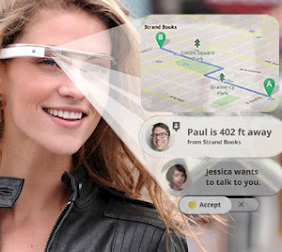
The Bionic Eye will improve over time with increased resolution. (simulation)
Dr. Mark Humayun was going to be a doctor all along, but when a family member lost her eyesight, he soon began his journey as an innovator. “When I was going through medical school, my grandmother went blind and there was really no cure for her,” the Duke University graduate says. “And it made me rethink my career and focus more on how to restore sight to those who are going blind.”
Now a professor at the Keck School of Medicine at the University of Southern California, Humayun has invented the Argus Ocular Implant, which allows blind patients to see again. According a press release on the school’s website, the intraocular retinal prosthesis “restores some visual capabilities for patients whose blindness is caused by Retinitis Pigmentosa (RP). RP is an inherited retinal degenerative disease that affects about 100,000 people nationwide.”
Read the rest of the story and comment at Huffington Post.
Future implications
As a futurist, I like to think about the impact of trends I see today. Just think of how digital imaging has evolved in our own lifetimes, from when Kodak’s first solid-state sensors converted light into a cluster of picture elements (pixels, or dots) in 1970. A sensor array on a computer chip already includes thousands of pixels (640×480 = 307,200 of them) or millions (3872×2592 = 10,036,224). And since semiconductor technology evolves exponentially, according to Moore’s Law, picture resolution and image sensing will continue to improve beyond what human eyes can see, or what we can imagine today.
Digital imaging in night goggles already amplifies light so we can see in the dark. Take that further and imagine being able to sense energy that’s beyond the wavelength of visible light, including X-rays, ultraviolet, and infrared.
 How will we perceive and use new digital imaging? Will we wear goggles, Google Glasses, or contact lenses where the images are converted to what the retina in our eyes can see? Or will we tie into the optic nerve or somehow otherwise interface with the brain. If we consider how far imaging has come in 40 years and how the tech innovation evolves exponentially, what’s possible in the next 40 years seems beyond our imagination. In many ways it may be driven less by what’s technically possible, and more by what society wants and needs. Dr. Humayun’s work is addressing one of those needs.
How will we perceive and use new digital imaging? Will we wear goggles, Google Glasses, or contact lenses where the images are converted to what the retina in our eyes can see? Or will we tie into the optic nerve or somehow otherwise interface with the brain. If we consider how far imaging has come in 40 years and how the tech innovation evolves exponentially, what’s possible in the next 40 years seems beyond our imagination. In many ways it may be driven less by what’s technically possible, and more by what society wants and needs. Dr. Humayun’s work is addressing one of those needs.
